Table of content
Pineapple fried chicken, a vibrant and tantalizing dish that marries the succulent sweetness of pineapple with the savory crispiness of fried chicken, has become a beloved staple in kitchens across the globe. This dish, rooted in Asian culinary traditions but adapted to suit international palates, offers a harmonious balance of flavors and textures that make it equally fitting for a casual family dinner or a showstopping centerpiece at a gathering. In this comprehensive guide, we will delve into the history, ingredients, and meticulous techniques required to create the perfect pineapple fried chicken, ensuring your dish is a culinary triumph.
A Brief History of Pineapple Fried Chicken
The origins of pineapple fried chicken can be traced back to Southeast Asia, where the combination of tropical fruits with savory proteins is a hallmark of regional cuisine. In countries like Thailand, the Philippines, and China, chefs have long experimented with balancing sweet, tangy, and umami flavors. Pineapple, with its bright acidity and natural sugars, emerged as an ideal companion to fried chicken, offering a refreshing contrast to the dish’s richness. Over time, this fusion spread to Western kitchens, where it was embraced as a novel twist on classic fried chicken recipes. Today, pineapple fried chicken is celebrated for its versatility—it can be tailored to suit spice preferences, dietary needs, and even presentation styles.
Ingredients: The Foundation of Flavor
To craft pineapple fried chicken that dazzles the taste buds, you must begin with high-quality ingredients. Each component plays a pivotal role in achieving the dish’s signature taste and texture.
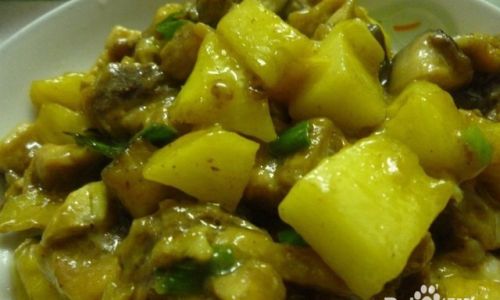
For the Chicken Marinade
- 500g boneless, skinless chicken thighs or breasts: Thighs are recommended for their juiciness and flavor.
- 3 tbsp soy sauce: Use low-sodium soy sauce for better control over saltiness.
- 2 tbsp oyster sauce: Adds depth and umami.
- 1 tbsp rice vinegar: Balances the richness with a subtle tang.
- 1 tbsp grated ginger: Provides a fresh, aromatic kick.
- 3 garlic cloves, minced: Infuses the chicken with pungent sweetness.
- 1 tsp sesame oil: Enhances the dish’s nutty undertones.
- 1 tbsp cornstarch: Acts as a tenderizer and helps the marinade adhere.
For the Batter
- 1 cup all-purpose flour: Creates a light, crispy coating.
- 1/2 cup cornstarch: Ensures extra crunch.
- 1 tsp baking powder: Adds airiness to the batter.
- 1 tsp salt: Enhances seasoning.
- 1 tsp white pepper: Offers a mild heat.
- 1 cup ice-cold water: Critical for achieving a shatteringly crisp texture.
For the Pineapple Sauce
- 1 cup fresh pineapple chunks: Avoid canned pineapple for a brighter flavor.
- 1/4 cup pineapple juice: Reserve from the fresh fruit or use 100% juice.
- 2 tbsp brown sugar: Balances acidity with caramelized sweetness.
- 2 tbsp rice vinegar: Provides tang.
- 1 tbsp soy sauce: Adds saltiness.
- 1 tbsp ketchup: Contributes a hint of tomato sweetness.
- 1 tsp cornstarch: Thickens the sauce.
- 1 red bell pepper, diced: Adds color and crunch.
- 1 small onion, sliced: Provides aromatic sweetness.
For Frying
- 2 cups vegetable oil: Peanut or canola oil works best for high-heat cooking.
Optional Garnishes
- Sesame seeds: For visual appeal and texture.
- Fresh cilantro or green onions: Add a pop of color and freshness.
- Lime wedges: A squeeze of citrus elevates the dish.
Step-by-Step Preparation
Marinating the Chicken
The marinade is the first step to infusing the chicken with layers of flavor. In a large bowl, combine the soy sauce, oyster sauce, rice vinegar, grated ginger, minced garlic, sesame oil, and cornstarch. Whisk until the cornstarch is fully dissolved. Add the chicken pieces, ensuring they are evenly coated. Cover the bowl with plastic wrap and refrigerate for at least 1 hour, or ideally overnight. Marinating allows the meat to absorb the aromatic seasonings while the cornstarch tenderizes it, resulting in tender, flavorful chicken.
Preparing the Pineapple
While the chicken marinates, prepare the pineapple. Trim the skin and remove the eyes using a sharp knife. Slice the fruit into bite-sized chunks, reserving 1/4 cup of juice for the sauce. Fresh pineapple is preferable here, as canned varieties often lack the vibrant acidity and sweetness required to balance the dish’s savory elements.
Crafting the Perfect Batter
The batter’s texture is pivotal to the dish’s success. In a mixing bowl, combine the flour, cornstarch, baking powder, salt, and white pepper. Gradually whisk in the ice-cold water until the batter reaches a pancake-like consistency—thick enough to coat the chicken but not so dense that it becomes gummy. The cold water is essential, as it minimizes gluten development, ensuring a crisp, not chewy, coating.
Frying the Chicken
Heat the vegetable oil in a deep skillet or wok to 350°F (175°C). Use a thermometer to maintain consistent temperature, as fluctuations can result in greasy or unevenly cooked chicken. Remove the marinated chicken from the refrigerator and discard any excess marinade. Dip each piece into the batter, ensuring it’s fully coated, and gently lower it into the hot oil. Fry in batches to avoid overcrowding, which lowers the oil temperature and causes soggy chicken. Cook for 6–8 minutes, or until golden brown and cooked through. Transfer the fried chicken to a wire rack set over paper towels to drain excess oil.
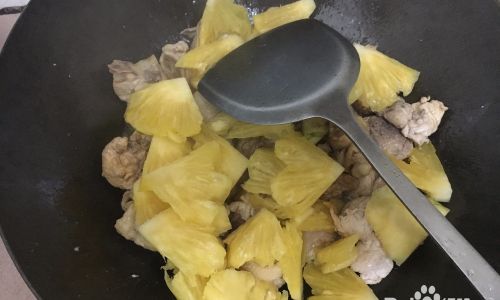
Creating the Pineapple Sauce
In a separate saucepan, combine the pineapple chunks, reserved juice, brown sugar, rice vinegar, soy sauce, ketchup, and cornstarch. Whisk until the cornstarch is fully incorporated. Bring the mixture to a simmer over medium heat, stirring constantly. Add the diced red bell pepper and sliced onion, and cook for 5–7 minutes, or until the sauce thickens and the vegetables soften slightly. The sauce should coat the back of a spoon—if it’s too thin, simmer longer; if too thick, add a splash of water.
Combining Chicken and Sauce
Once the chicken is fried and the sauce is ready, it’s time to unite them. Gently toss the fried chicken pieces in the pineapple sauce, ensuring each piece is generously coated. Be cautious not to overmix, as this can break the crispy coating. Alternatively, for a saucier dish, pour the sauce over the chicken on a serving platter.
Final Touches and Garnishes
Transfer the pineapple fried chicken to a serving dish. Sprinkle with sesame seeds, chopped cilantro, or sliced green onions for a burst of freshness. Serve with lime wedges on the side to allow diners to adjust the acidity to their liking.
Tips for Perfecting Pineapple Fried Chicken
- Temperature Control: Maintaining the oil’s heat is critical. If the oil is too hot, the batter will burn before the chicken cooks; too cool, and the chicken will absorb excess oil.
- Batter Consistency: The batter should be smooth and lump-free. If it’s too thick, add a tablespoon of cold water; if too thin, sprinkle in a bit more flour.
- Sauce Balance: Taste the sauce before adding it to the chicken. Adjust sweetness with more brown sugar or acidity with rice vinegar as needed.
- Garnish Timing: Add fresh herbs just before serving to preserve their vibrancy.
Variations and Customizations
- Spicy Pineapple Fried Chicken: Elevate the heat by adding minced chili peppers or a dash of sriracha to the marinade or sauce.
- Gluten-Free Option: Substitute all-purpose flour with a gluten-free blend and tamari for soy sauce.
- Vegetarian Twist: Replace chicken with fried tofu or tempeh, adjusting cooking times accordingly.
- Coconut Infusion: Add shredded coconut to the batter for a tropical flair.
Serving Suggestions
Pineapple fried chicken pairs beautifully with:
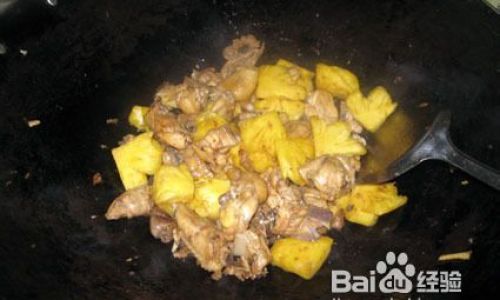
- Steamed Jasmine Rice: Absorbs the sauce beautifully.
- Fried Rice or Noodles: Adds texture and substance.
- Pickled Vegetables: Cuts through the richness with a tangy crunch.
- Iced Tea or Light Beer: Cleanses the palate between bites.
Health Benefits and Nutritional Notes
While pineapple fried chicken is undeniably indulgent, it offers surprising nutritional perks. Pineapple is rich in vitamin C and bromelain, an enzyme that aids digestion. Chicken provides lean protein, and the dish’s vibrant vegetables contribute fiber and antioxidants. To reduce calories, opt for air-frying the chicken instead of deep-frying, and use minimal oil in the sauce.
Cultural Significance
In many Asian cultures, pineapple symbolizes prosperity and welcome, making pineapple fried chicken a popular dish during celebrations. Its fusion of sweet and savory elements also reflects the region’s culinary philosophy of balancing contrasting flavors—a principle known as yum yuan in Chinese cuisine.
Common Mistakes to Avoid
- Overcrowding the Pan: This lowers oil temperature and leads to greasy chicken.
- Using Canned Pineapple: Its mushy texture and overly sweet flavor can dominate the dish.
- Skipping the Marinade: Results in bland, unevenly seasoned chicken.
- Rushing the Frying Process: Patience ensures a crisp, golden crust.
Conclusion
Pineapple fried chicken is more than a meal—it’s a celebration of flavor, a testament to the magic that happens when sweet and savory elements unite. By mastering the marinade, batter, and sauce, you can recreate this dish in your kitchen, impressing guests and satisfying cravings alike. Whether you adhere strictly to tradition or experiment with bold variations, this recipe invites creativity and guarantees a memorable dining experience. So, gather your ingredients, embrace the sizzle of the wok, and let the tantalizing aroma of pineapple fried chicken fill your home. Your journey to culinary excellence starts here.



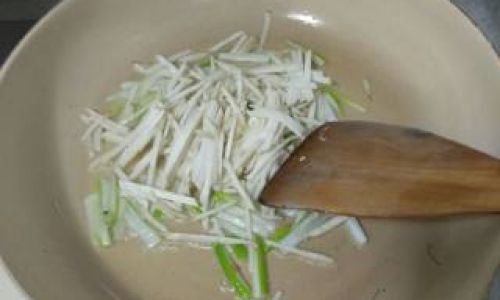
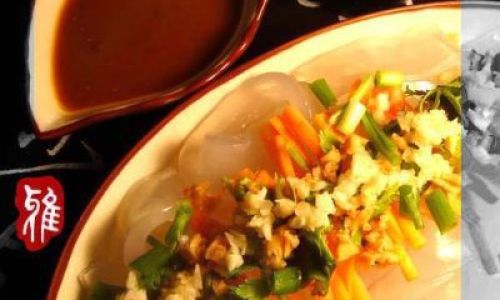
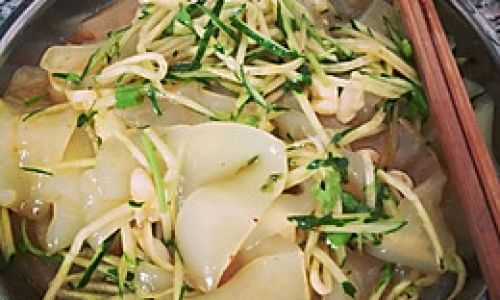
0 comments